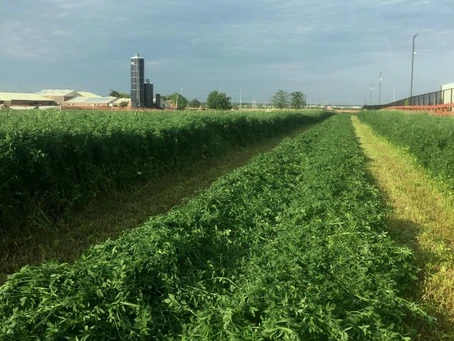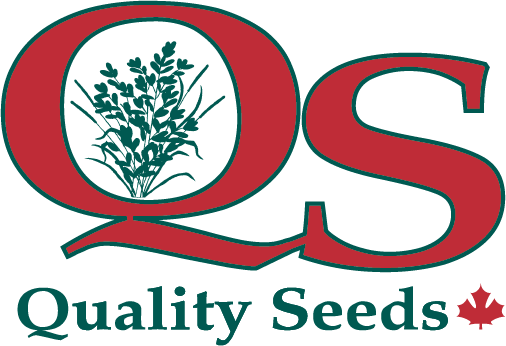First-Cut Haylage Harvest Timing

A common question this time of year is “when is the best time to cut first-cut dairy haylage?” High quality, highly digestible forage is essential to balancing high producing dairy cow rations, and dairy farm profitability. Straight alfalfa stands and straight grass stands are easier to predict. Alfalfa-grass mixtures are more complicated, depending on the grass species and variety (maturity) and grass percentage, as well as the spring weather.
First-cut harvest may be delayed slightly in 2023 by cooler than normal spring temperatures. This has delayed the growth, development and maturity of alfalfa more than the grasses. Growth in grasses is less dependent on heat, and more on day length. Grasses are currently more advanced in both growth and maturity relative to the alfalfa. Alfalfa growth and maturity can advance rapidly with the warmer weather during later May. Early-cut grass is very high quality, but after heading it loses digestibility and quality faster than alfalfa. Some grasses, particularly some orchardgrass varieties, are beginning to head. The amount and species of grass in a mixture will impact optimum cutting time. Monitor your fields closely to determine optimum cutting stage.
Optimal NDF Levels
Optimal haylage NDF levels will depend on what else is being fed in the diet and inclusion rates. Discuss your optimal levels with your nutritionist. Many dairy producers target harvesting first-cut alfalfa haylage stands at 38% NDF and 50% NDF for pure grass stands. (This assumes, a 10-15% decline in forage quality due to harvest, storage and feedout losses.) These benchmarks are considered a good balance between the conflicting goals of digestible energy, protein utilization, adequate dietary fibre (rumen function) and yield per acre.
Why are the optimal NDF levels different for alfalfa and grass? Early-cut grasses are higher in fibre (NDF) than alfalfa, but are also much higher in fibre digestibility (NDFD). Although there is a wide range, grasses at this stage may have 12 – 13 % points higher NDF than alfalfa, but grasses also have at least 12 – 13% points higher NDFD or more. Grasses contain much more hemicellulose than alfalfa, which is the highly digestible component of forage fibre. Higher fibre digestibility enables higher intakes and milk production. This can decrease the need to add straw to a TMR to provide minimum physically effective fibre for proper rumen function and cow health, while contributing much more digestible energy than straw. After grasses reach optimal maturity, quality declines much faster than alfalfa. Refer to QS Infosheet “Improved Dairy Alfalfa-Grass Mixtures” (https://www.qualityseeds.ca/post/improved-dairy-alfalfa-grass-mixtures).
Pure alfalfa stands
PEAQ sticks have been used for a number of years to predict alfalfa NDF levels based on stem length. In bud-stage alfalfa, the target 38% NDF typically occurs when the stem length is at about 30 inches in height.
Pure grass stands
To achieve the target 50% NDF, we must harvest straight grass stands at flag-leaf or very early boot-stage. Of course, plant height will be very species and rainfall dependent. It is suggested the target can occur when nearby alfalfa stands are only about 14 inches in height.
Alfalfa-grass mixtures
It is necessary to estimate the % grass in the stand. (There is a tendency to underestimate it.) Dr Jerry Cherney, Cornell University, developed a method that uses the alfalfa height and estimated % grass to target optimal alfalfa and grass NDF levels. (bit.ly/3opjaQM) For example, a stand with 50% grass has a target NDF level of 44% with an alfalfa height of 24 inches. Target a 25% grass mix at 42% NDF, typically when the alfalfa is 27 inches.
Normally, if a good weather window arrives, cutting too early is usually considered better than cutting too late. It is much easier for a nutritionist to balance a ration with forage that is low in fibre by adding straw, than it is meeting intake and energy requirements with forage that is too high in undigestible fibre.
“Scissors-cut” field sampling, overnight courier and rapid laboratory analysis can also help predict optimal harvest dates. (Refer to “Using Scissors Cutting To Optimize Forage Quality” http://fieldcropnews.com/?p=2610)
